A stainless steel cage is a robust containment and housing solution designed for various animals, including birds, dogs, and other small pets. These cages are crafted from high-grade stainless steel, which ensures durability, resistance to corrosion, and ease of cleaning. The versatility of stainless steel cages makes them ideal for both commercial and domestic applications, providing secure and comfortable environments for pets and animals.
Types of Stainless Steel Cages
The market offers a plethora of stainless steel cages, each serving a different purpose. For avian enthusiasts, the stainless steel bird cage is a popular choice, designed with bar spacing appropriate for the bird's size to prevent escape or injury. The stainless steel parrot cage often includes additional features like swing-out feeders and play stands to cater to the intelligent and active nature of parrots. For canine containment, stainless steel dog cages are constructed with heavier gauges to withstand the strength of larger breeds, and often incorporate slide-out trays for easy cleaning. The variety extends to foldable designs for portability and modular units that can be expanded for breeding or professional boarding purposes.
Structure of Stainless Steel Cages
The physical structure of a stainless steel cage is meticulously designed to ensure functionality and safety. The base structure typically consists of a heavy-duty frame that supports the weight of the animal and withstands vigorous movement. Stainless steel bars or mesh make up the walls and door, providing ample visibility and ventilation. High-quality hinges and latches are used to prevent accidental openings, with some designs featuring double security mechanisms. Internally, some cages may have adjustable shelves or perches, especially in stainless steel bird cages, allowing for a customizable living space that can be tailored to the specific needs of the animal.
Materials and Properties
Stainless steel is the material of choice for these cages due to its superior properties. It is an alloy composed mainly of iron, carbon, and chromium – the latter providing a protective layer against rust and corrosion. This resistance to the elements makes stainless steel ideal for both indoor and outdoor use. The non-porous surface of stainless steel is also hypoallergenic and does not retain odors, making it a hygienic option for sensitive environments. Its smooth surface is easy to wipe down, reducing the effort required for maintenance and ensuring a clean habitat for the animal.
Business Usages and Applications
In the business realm, stainless steel cages are invaluable. Veterinary clinics favor them for their sanitary qualities, easy-to-clean surfaces, and the visibility they provide to monitor recovering animals. Pet stores and breeders use these cages for displaying and housing animals in a manner that is both attractive to customers and beneficial for the animals' health. Zoos and animal sanctuaries also utilize these cages for their durability and the safety they provide to both the animals and the public. In these settings, the cages often have specialized features, such as feeding ports and waste collection systems, which streamline the care process and enhance operational efficiency.
Functions of Stainless Steel Cages
The design of a stainless steel cage is centered around its function. For containment, the cages are built with locking mechanisms that are simple for humans to operate but complex enough to prevent animals from opening them. Ventilation is another key function, with the spacing of the bars or mesh allowing for air flow without compromising security. Some cages are also designed to be stackable, maximizing space efficiency for facilities that house multiple animals. The function of mobility is addressed in designs that include casters, enabling the cage to be moved easily for cleaning or repositioning.
Features of Stainless Steel Cages
One of the standout features of stainless steel cages is their longevity. Unlike other materials that may degrade or warp over time, stainless steel maintains its structural integrity and appearance. Many cages also feature modular designs, allowing for expansion or reconfiguration as the needs of the animal or business change. Some cages are equipped with noise-reducing features, such as rubber bumpers, to minimize the sound of the animal moving around, which is particularly beneficial in a busy clinic or shelter environment.
Benefits of Stainless Steel Cages
The benefits of stainless steel cages are extensive. For the animal, they provide a safe and clean environment, free from the risks of rust or harmful coatings that could be ingested. For the owner or caretaker, the ease of maintenance and cleaning is a significant advantage, saving time and effort. The aesthetic appeal of stainless steel can also contribute to a more professional appearance in a business setting, potentially attracting more customers. Furthermore, the non-reactive nature of stainless steel means that these cages are safe for animals with allergies or sensitivities.
How to Use Stainless Steel Cages
Effective use of a stainless steel cage involves proper setup and placement. It is important to ensure that the cage is assembled according to the manufacturer's instructions, with all fastenings secure. Placement should be in an area that is safe from environmental hazards and provides the animal with a comfortable habitat. For example, bird cages should be placed in a location that receives natural light but is not directly exposed to harsh sunlight or drafts.
How to Choose the Right Stainless Steel Cage
Choosing the correct stainless steel cage requires assessing the specific needs of the animal, including size, activity level, and any special requirements they may have. It is also important to consider the space where the cage will be placed to ensure it fits appropriately and allows for easy access for feeding and cleaning. The cage's features, such as the type of door or the inclusion of wheels, should align with the intended use and the caretaker's preferences.
How to Clean and Maintain Stainless Steel Cages
Cleaning a stainless steel cage is a straightforward process. Regular cleaning with a mild detergent and warm water is typically sufficient to keep the cage sanitary. For disinfecting, appropriate animal-safe cleaning agents should be used. It is crucial to rinse the cage thoroughly after cleaning to remove any residue and to dry it to prevent water spots and maintain the shine of the stainless steel.
How to Install Stainless Steel Cages
Installation of a stainless steel cage is designed to be user-friendly, often requiring minimal tools. It is essential to follow the provided instructions to ensure that the cage is assembled correctly for the safety of the animal and the longevity of the cage. Checking all locks and fastenings regularly is also part of the installation process to ensure ongoing security.
Discover the extensive range of stainless steel cages on Alibaba.com, designed to meet the diverse needs of animals and the businesses that care for them. With a focus on quality and customer satisfaction, Alibaba.com connects buyers with reputable suppliers offering products that stand the test of time.











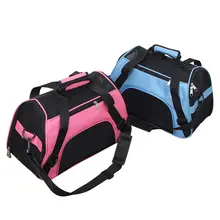

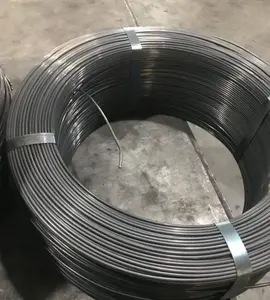



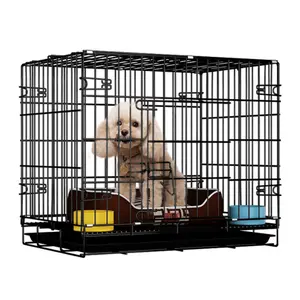
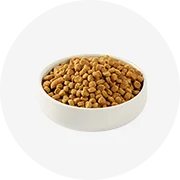
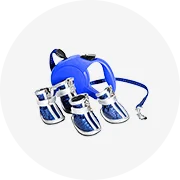








 浙公网安备 33010002000092号
浙公网安备 33010002000092号 浙B2-20120091-4
浙B2-20120091-4